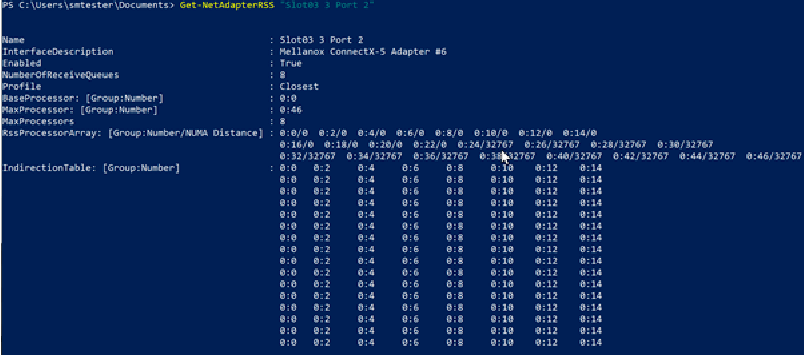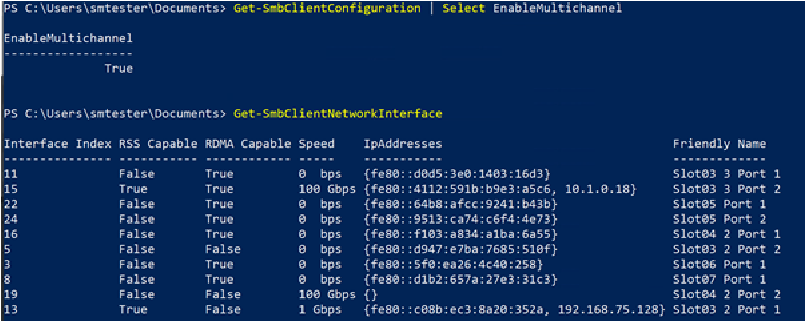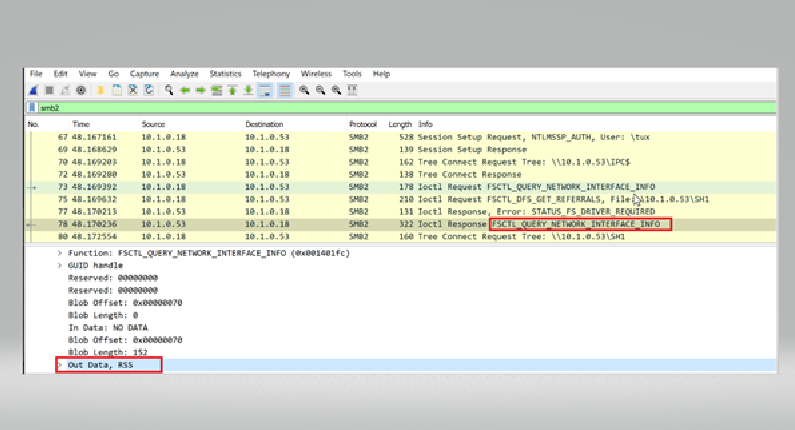Frequently Asked Questions
Active Directory FAQ
How do I join Windows Active Directory Domain?
Please refer to section Active Directory Configuration.
How do I join trusted domains?
Please contact technical support.
Active-Active Setup / Failover Setup FAQ
How do I set up active-active failover?
Please refer to Instruction Active-Active Configuration. Please contact technical support for the document.
How do I copy keytabs across the nodes?
Please refer to Instruction Active-Active Configuration. Please contact technical support for the document.
**Why is the failover not working (active-active)?
Please contact technical support.
Why is failover not working (active-passive)?
Please refer to the section Connection Failover and Recovery and Continuous Availability (CA). Please check the following values of the following parameters:
[global]
tcp_tickle = true
tcp_tickle_params = path=<auxiliary path>
[share]
vfs = libc:force_sync
ca = true
ca_params = path=<auxiliary path>
Performance FAQ
How do I configure Tuxera Fusion File Share to achieve the best performance?
Given that you are working with the default configuration, please apply these in the global section:
sess_open_files_max = 1024
open_files_max = 8192
connections_max = 1024
For transport threads, this value is determined by the number of TCP connections Fusion needs to handle. Assuming your Windows clients have RSS-capable NICs, then the value would be 4 (default RSS) multiplied by the number of adapters (per client) and multiplied by the number of clients. This of course assumes RSS is set to the default of 4 (it can be changed by ‘Set-SMBClientConfiguration-ConnectionCountPerRssNetworkInterface’).
For example, if you have four Windows clients with two adapters on each client, then:
(4_RSS * 2_adapters) * 4_clients = 32
So in the global section:
- transport_rx_threads = (RSS value, e.g. 4 * number of adapters per client) * number of concurrently connected clients
- transport_tx_threads = (RSS value, e.g. 4 * number of adapters per client) * number of concurrently connected clients
For vfs threads, it is best to first benchmark IO on the local filesystem of your instance since Fusion File Share cannot give more throughput than the underlying storage/filesystem.
Then start with vfs_metadata_threads and vfs_data_threads equal to the number of cores and increase by a factor of 2 until you reach the maximum level of IOPS that your storage can provide for the specific workload being tested from the Windows client.
So in the global section:
- vfs_metadata_threads = number of cores and increase by a factor of 2 until maximum IOPS is reached
- vfs_data_threads = number of cores and increase by a factor of 2 until maximum IOPS is reached
And finally, you can look in the Fusion logs (see the section Logging) to see if you need to increase transport or vfs threads.
If you are seeing messages flooding the logs:
Message queue ‘<NAME>’ was under Tx pressure while adding <NUM> msgs If ‘<NAME>’ is ‘tsmb_transport’, then you should increase transport_rx_threads and transport_tx_threads. If ‘<NAME>’ is ‘vfs_meta_xxx’ or ‘vfs_io_xxx’ then you should increase the vfs_metadata_threads and vfs_data_threads.
What is the performance boost (percentage-wise) we could expect from using multi-channel?
The network performance is close to linear if there are no CPU or storage bottleneck.
User Mapping FAQ
How do I setup local user?
Please refer to the section User Account.
How do I setup ldap user?
Please refer to the section LDAP.
How to map POSIX names and AD names
Please refer to the section User Account.
How to map RID users?
NSS module is used for ID mapping which can use SSSD, Windbind or other ID mapping service. Please contact technical support for further assistance.
Feature FAQ
How do I enable compression?
Please refer to the section Compression. Check that the SMB client also supports compression.
How do I enable RDMA (SMB direct)?
Please refer to the section RDMA (SMB Direct).
On Windows client: Enable-NetAdapterRdma -InterfaceDescription <String[]> and Get-NetAdapterRdma.
This is a good setup for verifying and testing with diskspd (https://learn.microsoft.com/en-us/azure-stack/hci/manage/diskspd-overview).
How do I enable/veriify multichannel?
Step 1. Verify network adapter configuration on Windows client
Use the following Windows PowerShell cmdlets to verify multiple NICs and/or to verify the RSS.
This will show you what adapters you have:
- Get-NetAdapter This will confirm RDMA and RSS1
- Get-NetAdapterRDMA
- Get-NetAdapterRSS Example:

Step 2. Verify SMB configuration
Use the following Windows PowerShell cmdlets to make sure SMB Multichannel is enabled, confirm the NICs are being properly recognized by SMB and that their RSS capabilities are being properly identified.
On the SMB client, run the following Windows PowerShell cmdlets:
- Get-SmbClientConfiguration | Select EnableMultichannel
- Get-SmbClientNetworkInterface

Verify MTU size:
- Get-NetIPInterface
Step 3. Verify the SMB connection
Verify existing SMB mountpoints:
- Get-SmbConnection
- Get-SmbMultichannelConnection

Step 4. View SMB Multichannel Events
SMB Multichannel events are recorded in the SMB Client log. You can look at this log using the Event Viewer or query it using Windows PowerShell.
Option 1: Using Event Viewer
To view the SMB Multichannel events using Event Viewer, use the following steps on the SMB Client:
- Open Server Manager
- In Server Manager, click Tools, and then click Event Viewer
- In Event Viewer, expand the console tree to show Applications and Service Logs, Microsoft, Windows, SMB Client, Operational
- Click on Filter Current Log…in the Actions pane on the right and enter 30700-30705 on the filter for Event IDs
To view only errors:
- Click on "Filter Current Log…" in the Actions pane on the right and select the checkbox labeled Errors.
Option 2: Using Windows PowerShell To view the SMB Multichannel events using Windows PowerShell, use the following cmdlet on the SMB client:
Get-WinEvent -LogName Microsoft-Windows-SMBClient/Operational | ? { $_.Id -ge 30700 -and $_.Id -le 30705 }
To list only errors, use the following cmdlet:
Get-WinEvent -LogName Microsoft-Windows-SMBClient/Operational | ? { $_.Id -ge 30700 -and $_.Id -le 30705 -and $_.Level -eq 2 }
View SMB Performance Counters
There are several performance counters related to SMB in Windows Server 2012. To view SMB-related performance information, follow these steps:
- Open Server Manager
- In the Tools menu, open Performance Monitor
- In Performance Monitoring, click on Performance Monitor in the console tree
- Switch to the Report View by pressing CTRL-G twice (or using the icon on the toolbar)
- Add performance counters to the view by pressing CTRL-N (or using the icon on the toolbar)
The following Performance Counters are useful when looking at activities related to SMB, SMB Direct and Network Direct:
Counter Name Shows information for:
- SMB2 Server Shares Shares on the SMB Server
- SMB2 Server Sessions Sessions on the SMB Server
- SMB2 Client Shares Shares on the SMB Client
Step 5. Further troubleshooting can be done with Wireshark packet capture.
Start Wireshark on the appropriate interface and mount SMB share to Windows client (net use Z: \delete to unmount):
net use Z: \\[server hostname or ip address]\[share] /USER [username] [password]
Example:
net use Z: \\10.1.0.53\SH1 /USER:tux password123
Stop capture, filter by ‘smb2’ and look for:
FSCTL_QUERY_NETWORK_INTERFACE_INFO response from server and see if it responded with RSS

How do I configure log level?
Please refer to the section Log Level.
I am unable to read a snapshot
Please refer to the section Volume Shadow Copy (VSS).
Miscellaneous FAQ
What kind of debug info I need to send to get the technical support from Tuxera?
Please refer to the section Contact and Support Information.
Is it possible to manage all of the share and global configuration strictly by modifying the tsmb.conf file?
You can use tsmb-cfg utility to change server configuration in run-time in addition to modifying tsmb.conf directly. You can find more information about tsmb-cfg tool in the section Configuration Options.
Do you support running NFS and SMB in parallel?
Please contact technical support for the latest roadmap.
Do you support cross-protocol locking (Ganesha NFS 3.10+)?
Please contact technical support.
Do you support “feature xyz” like samba?
For the full list of samba features supported by Fusion File Share, please contact technical support.
I can’t find ”tsmb.ko”
tsmb.ko is Fusion file server kernel module. The user-space Fusion delivery package doesn’t include kernel module.
I am unable to start Fusion server
Please contact technical support.
What is the minimum hardware requirement for Tuxera Fusion File Share?
The minimum hardware requirement for Tuxera Fusion File Share is found on technical specification document. Please contact technical support for the document.
I found that the regular file can successfully set the hidden attribute, but folders cannot be set.
This is expected, because Fusion File Share does not map ”hidden” bit to folders, as it would prevent users that belong to ”others” class accessing the folder: Hidden File Attribute to POSIX ‘X’ bit of Others.
Please note, that in Linux the execute bit has different effect on files and folders:
- Folders: The execute bit (x) allows the affected user class to enter the directory, and access files and directories inside.
- Files: The execute bit (x) allows the affected user class to execute the file.
We found one issue that Files that begin with a dot (.) char are not marked hidden on SMB server as below. The attached file is current tsmb configuration file. Can you help to have a look?
Please try again after specifying ’filename:H:.*’ option in ’map_attributes’ share configuration option, e.g.:
map_attributes = xattr,filename:H:.*